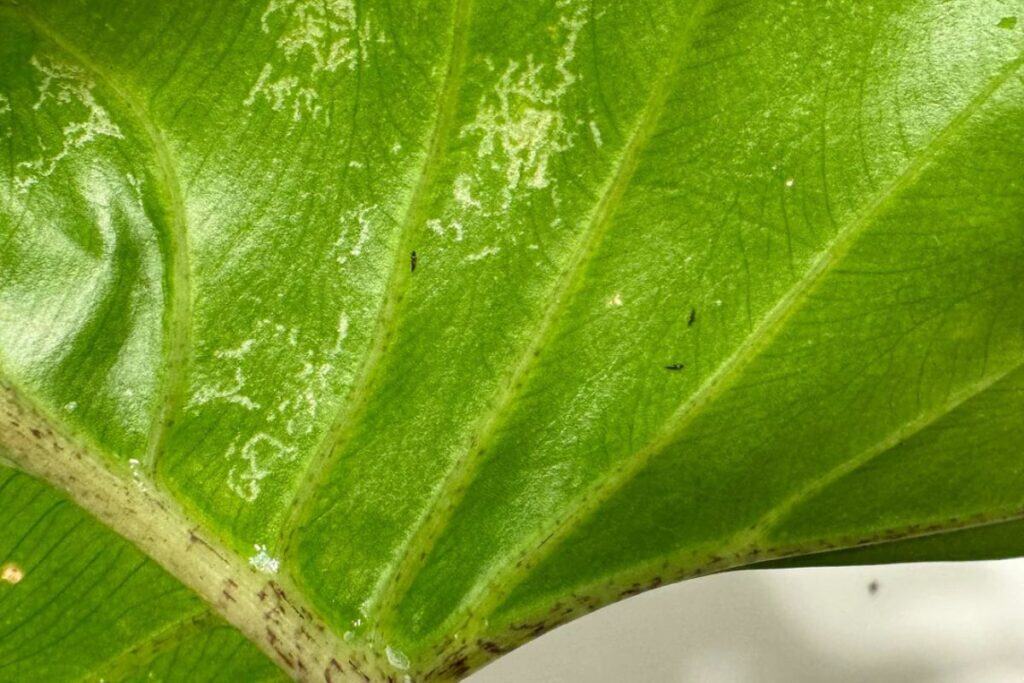Thrips are slender, fast-moving pests that damage indoor plants from the inside out. Learn how to identify, treat, and prevent thrips infestations.
👀 What Are Thrips and Why They’re a Problem
Thrips are tiny, slender insects that puncture plant cells and suck out the contents, leaving behind silver streaks, distorted growth, and black specks of frass (droppings). They’re fast, sneaky, and can fly or jump—making them one of the hardest pests to catch and control.

🔍 How to Spot Thrips Early
Thrips are stealthy and fast. Here’s how to catch them before they cause serious damage:
- Silvery or bronze streaks on leaves
- Distorted or curled new growth
- Black specks (frass) on leaf surfaces
- Fast-moving, slender insects that jump or fly when disturbed
- Tap test: Tap a leaf over white paper—look for tiny, dark slivers that move quickly
🧴 Thrips Treatment Options That Work
1. Captain Jack’s Deadbug Brew (Spinosad-Based)
- Targets thrips at all life stages
- Made with spinosad, a natural bacteria-derived insecticide
- Safe for most houseplants when used as directed
- Spray under leaves and repeat every 5–7 days
- Avoid direct sunlight after application to prevent leaf burn
2. Neem Oil or Insecticidal Soap
- Disrupts thrips’ life cycle and kills on contact
- Spray under leaves and into crevices
- Safe for sensitive foliage when diluted properly
- Apply in the evening and wipe excess after a few hours
3. Sticky Traps (Blue or Yellow)
- Attract and trap adult thrips
- Place near infested plants
- Helps monitor and reduce population
4. Diluted Alcohol Spray (1:3 ratio)
- Kills on contact
- Use cautiously on sensitive plants
- Always test on one leaf first
🧠 Pro Tip:
Thrips often hide in new growth and leaf undersides. Spray upward and gently wipe down to remove eggs and residue.

🧼 Bonus Tactics for Persistent Infestations
- Rinse plants thoroughly with lukewarm water to dislodge thrips
- Isolate infected plants to prevent spread
- Repeat treatments every 5–7 days—thrips have fast life cycles
- Prune heavily damaged leaves to reduce hiding spots
🚫 How to Prevent Thrips Long-Term
- Inspect new plants before bringing them indoors
- Quarantine for 1–2 weeks
- Avoid overfertilizing—lush growth attracts thrips
- Improve airflow and reduce humidity
- Use sticky traps preventively during warm months
🌱 Final Thoughts
Thrips may be tiny, but they’re relentless. With consistent inspection, targeted treatments, and smart prevention, you can protect your indoor jungle.
